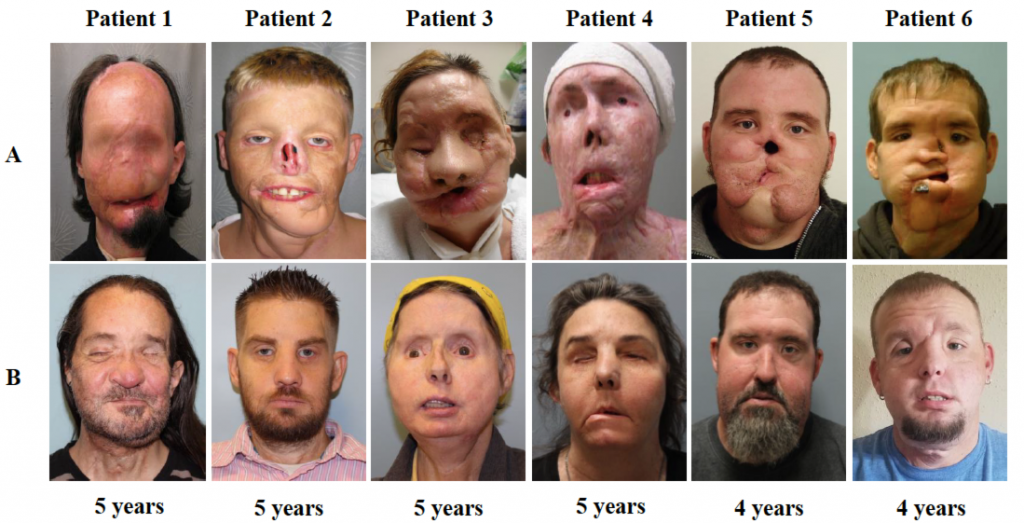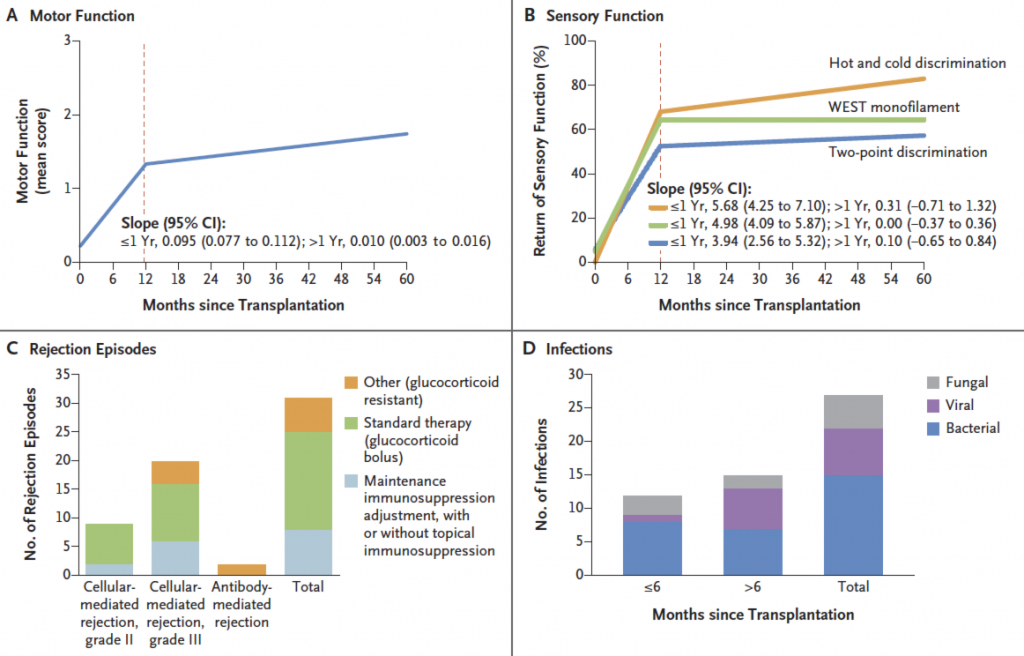New England Journal of Medicine 2019. May 29.
Authors:
Tasigiorgos S, Kollar B, Turk M, Perry B, Alhefzi M, Kiwanuka H, Nizzi MC, Marty FM, Chandraker A, Tullius SG, Riella LV#,Pomahac B#
#Co-Senior Authors
Abstract:
Facial vascularized composite allograft transplantation holds the promise of restoring form and function to patients with severe facial disfigurement for whom other satisfactory treatment options are lacking.1,2 We previously reported the transplantation of full facial vascularized composite allografts in three patients.3 Since then, three additional patients, one with full and two with partial facial vascularized composite allografts, underwent transplantation according to our protocol. Here we present the follow-up of all six patients.
Median follow-up time was five years (range four to five years), and the median age at transplantation was 35.5 years (range 25-57). No face allograft losses or patient fatalities occurred. The motor function improved significantly both during and after the first post-transplant year, reaching an average of 60% of maximal motor function at five years of follow-up (Fig.1A). Statistically significant improvement in sensory return assessed by two-point discrimination, hot/cold discrimination and pressure monofilament testing occurred only during the first year after transplantation (Fig. 1B). The self-reported quality of life evaluated by EQ-5D scale improved non-significantly between baseline and maximal follow-up, while there was also a non-significant decrease in CES-D depression score throughout the follow-up (Fig. S1). Additional information is available in the Supplementary Appendix: Methods, Table S1 and Figures S2-S4.
Maintenance immunosuppression typically consisted of triple therapy with tacrolimus (target levels 6-10 ng/ml after first year), mycophenolate and prednisone, and glucocorticoids were completely weaned in four patients.4The patients experienced a median of 5.5 acute rejection episodes (range 2-7) requiring treatment (Fig. 1C, and Table S2). This higher rate of acute rejection necessitated reintroduction of maintenance glucocorticoids in three patients (Fig. S5). Post-transplant infections were most commonly of bacterial etiology (Fig. 1D, and Table S3). There have been no cases of new onset diabetes mellitus, hypertension or lipid disorders post-transplant, with the exception of patient 5 who was diagnosed with hypertension 2.5 years after transplantation. A mean decrease of 25 ml/min estimated glomerular filtration rate (eGFR) occurred within the first year after transplantation but never dropped below eGFR of 60 ml/min at five years of follow-up.5No malignancies were documented to date.
The facial restoration provided the patients with adequate functionality which facilitated their social reintegration. Continued monitoring using detailed outcome measures in order to fully understand the impact of this novel procedure on the patient’s life is important.
In conclusion, the results of this study provide results of facial vascularized composite allograft transplantation in 6 patients at five years of follow-up.
News coverage:
Figure 1. Aesthetic outcomes after face transplantation. (A) Pictures of patients before face transplantation. (B) Pictures of patients
at the date at which they were closer to the 5-year mark after transplantation.
Figure 2. Quantitative Outcome Measures in Six Patients Who Underwent Face Transplantation, at a Median 5-Year Follow-up.


